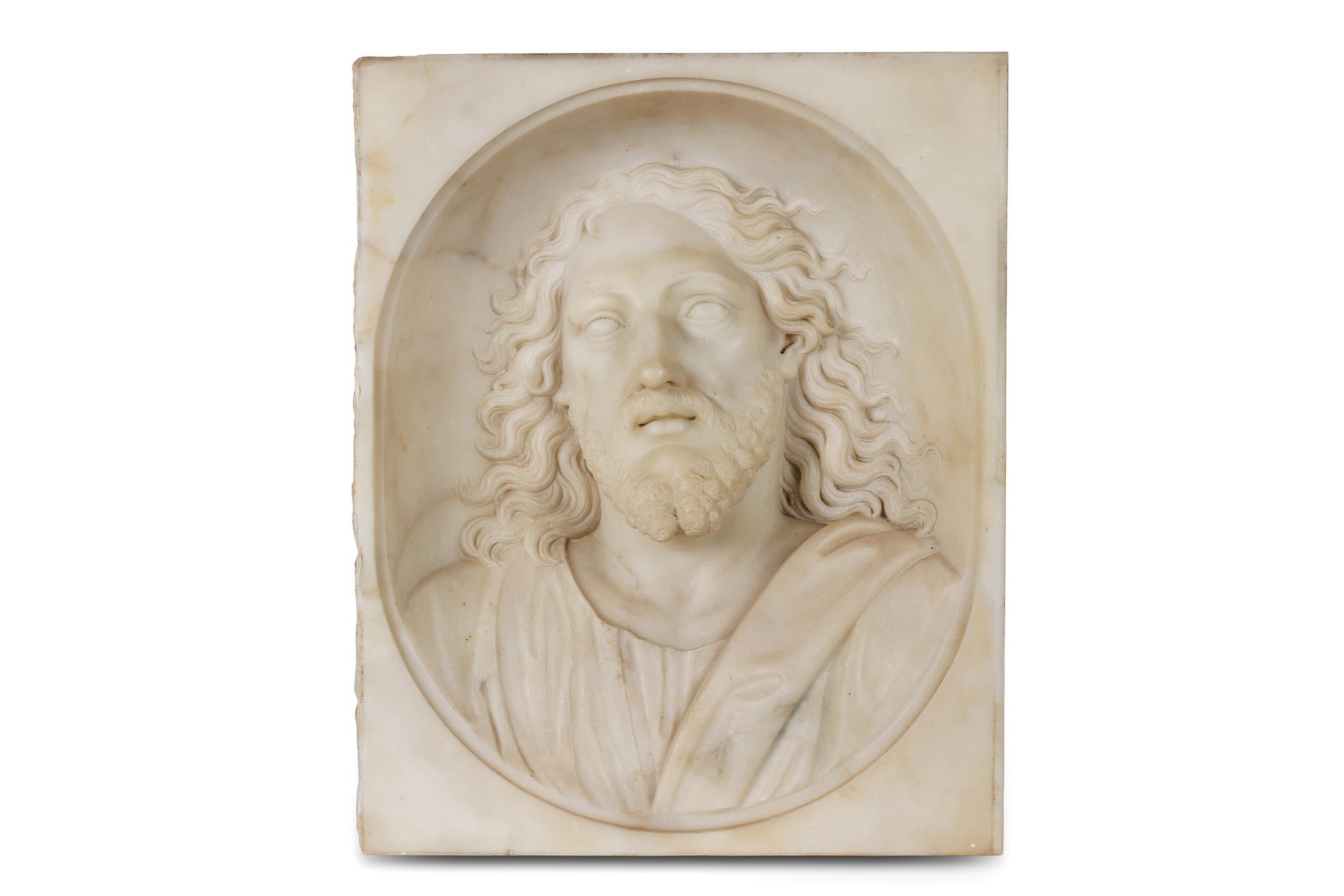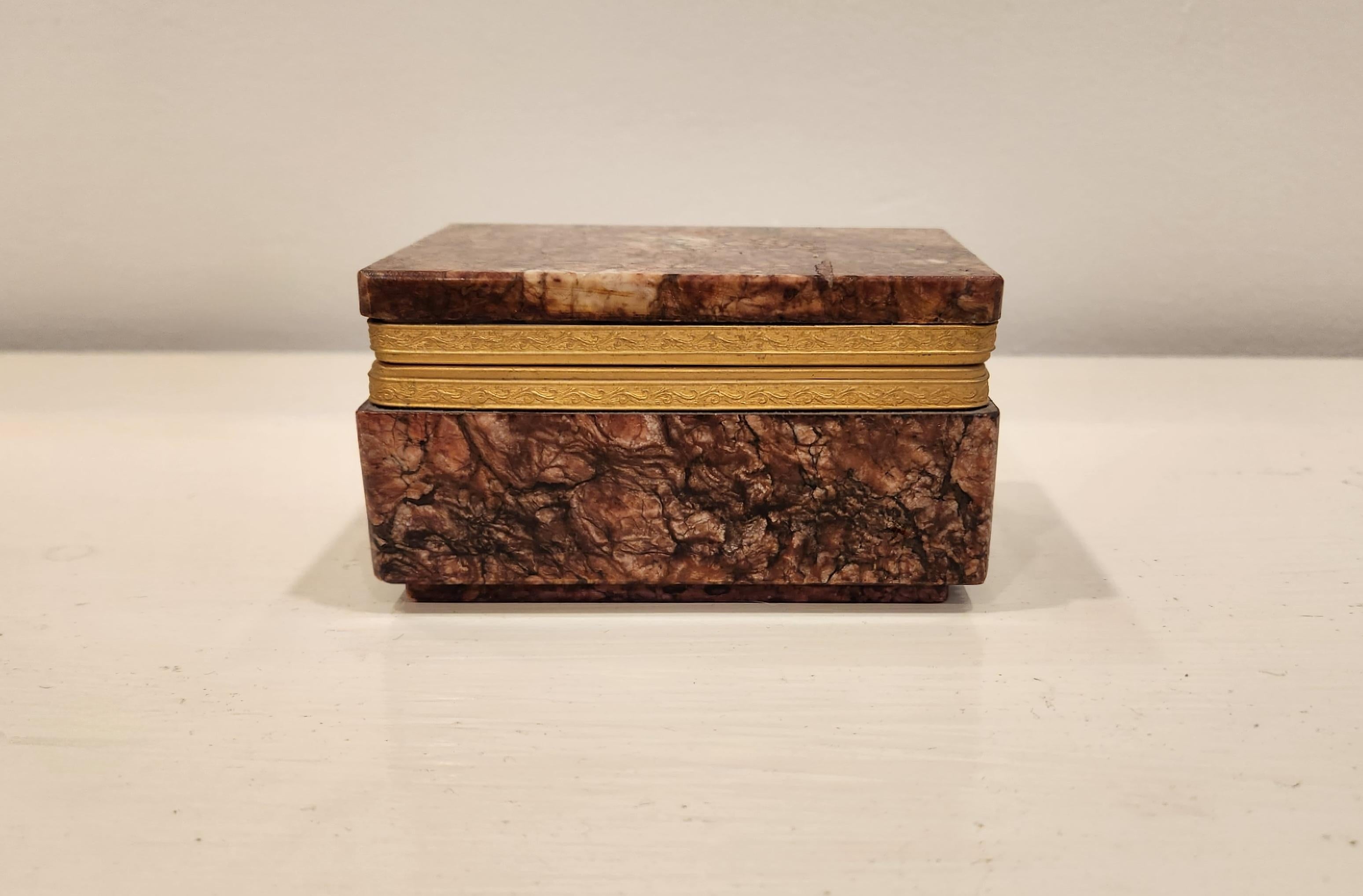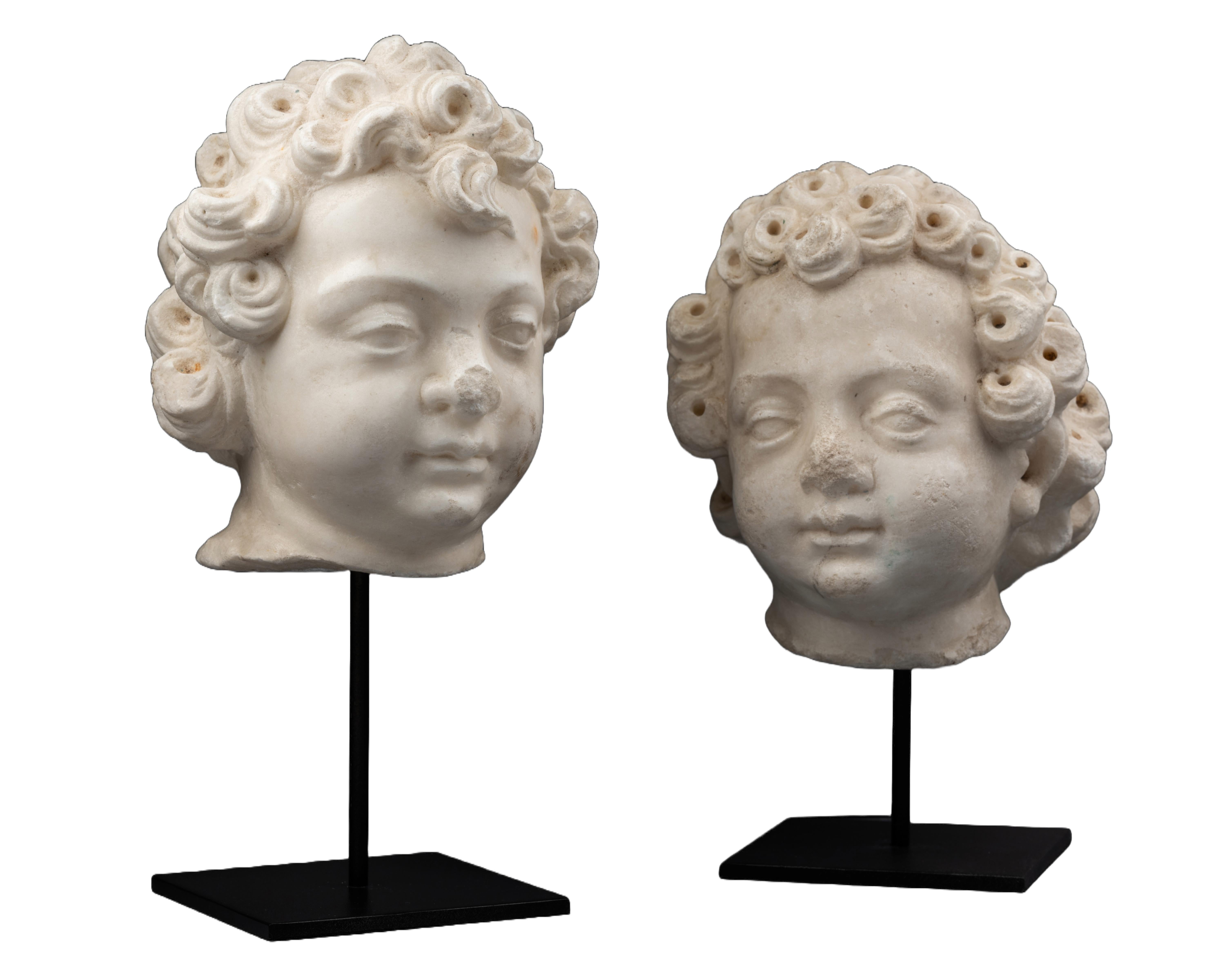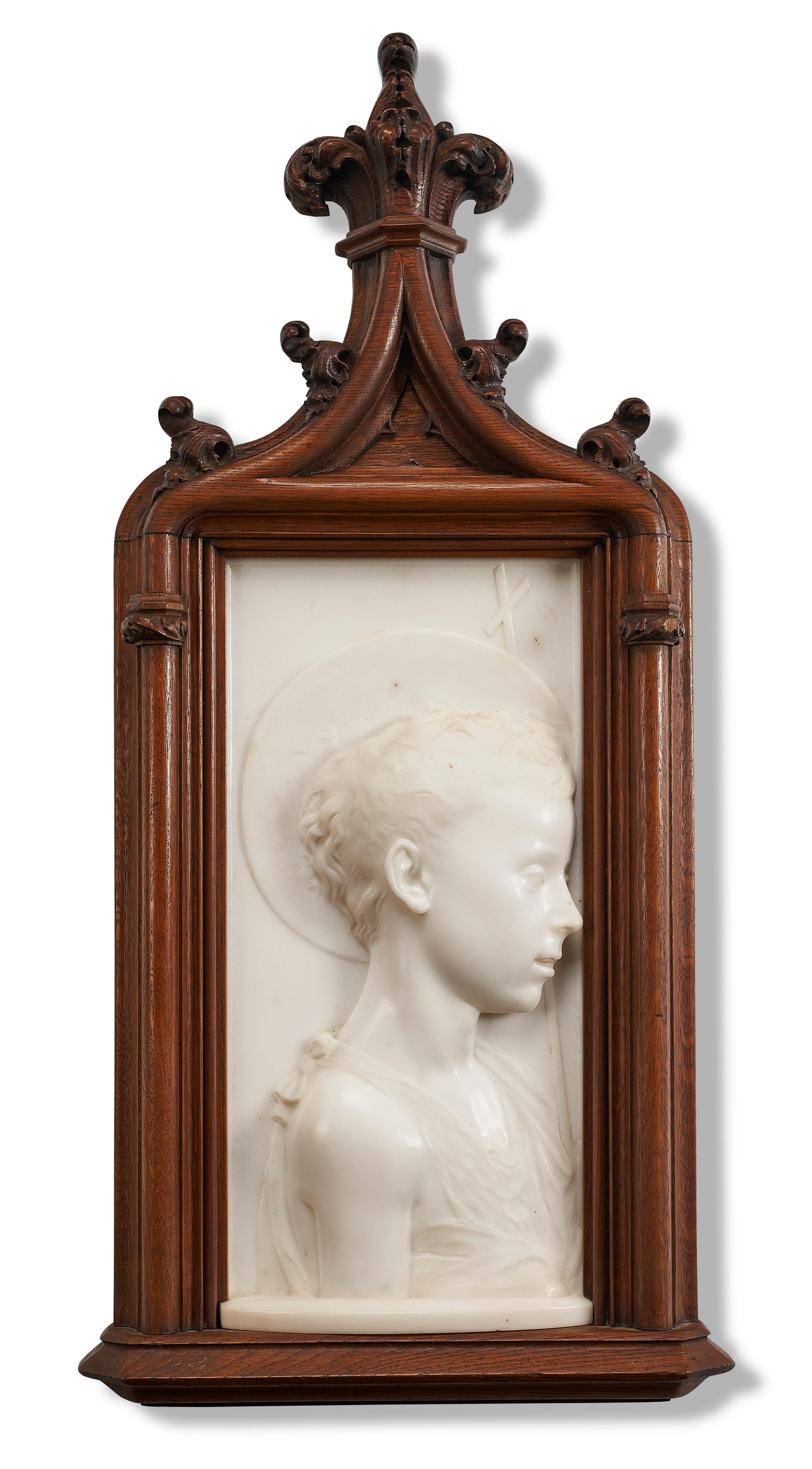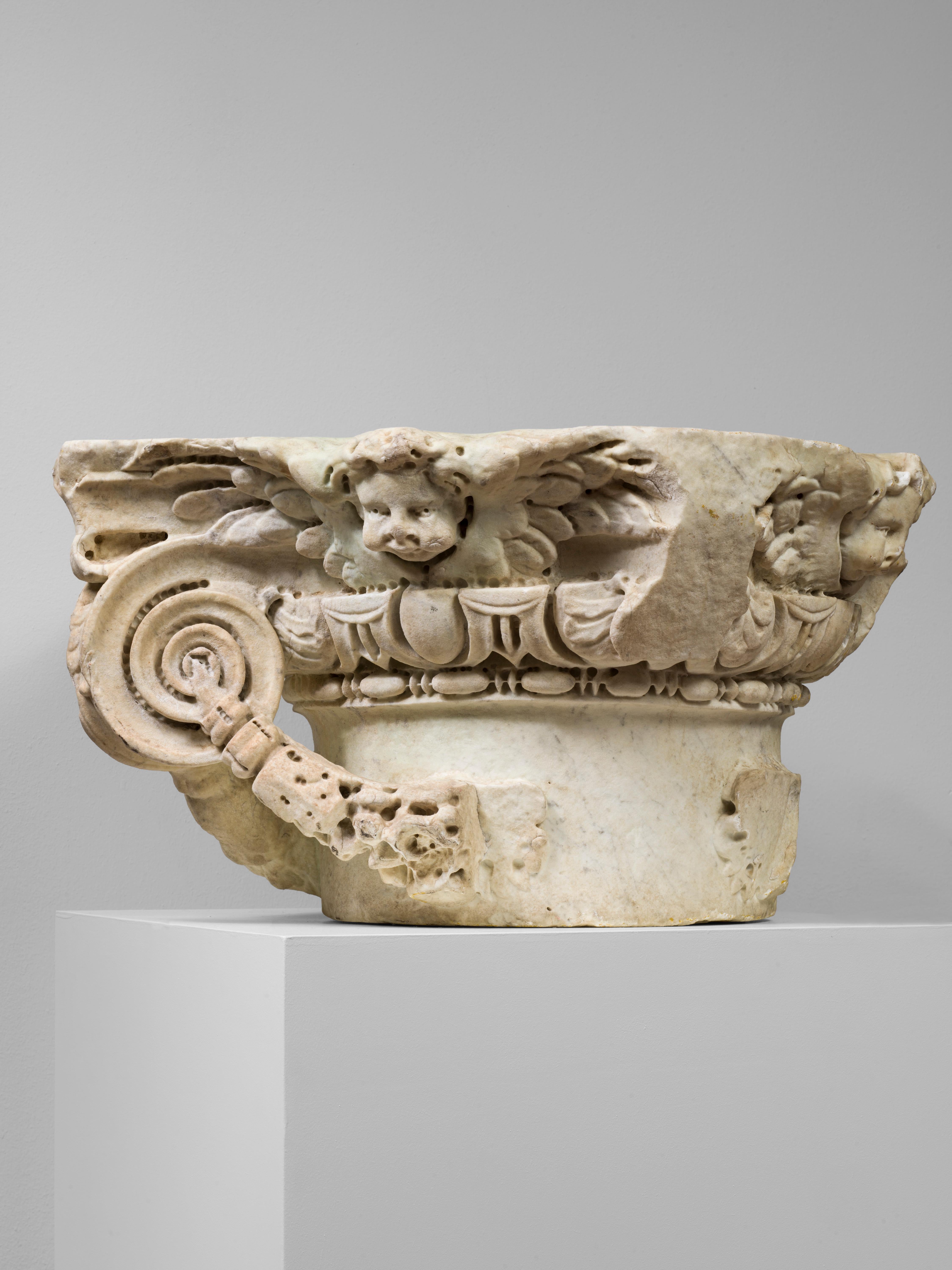Items Similar to The Infant Saint John the Baptist with a Lamb
Want more images or videos?
Request additional images or videos from the seller
1 of 5
The Infant Saint John the Baptist with a Lambafter 1655
after 1655
About the Item
Provenance:
James Byrnes, Los Angeles (1917-2011)
Giusto Le Court was born Josse or Justus de Corte in the Flemish city of Ypres. His father Jean was a sculptor and presumably his earliest training was with him before he entered the studio of Cornelis van Mildert. The young artist was clearly influenced by the dominant Flemish sculptor of the time, Artus Quellinus the Elder, with whom he may have worked on the decoration of the Amsterdam City Hall.
Following the lead of many northern artists he travelled to Rome, perhaps more than once, before settling in Venice around 1655. It was there, as one of a colony of expatriate artists, that he made his name as a sculptor. One of his first Venetian commissions was for the monument to Alvise Mocenigo in the Church of San Lazzaro dei Mendicanti, where Le Court sculpted the marble figures of Strength and Justice. He also collaborated with the celebrated architect Baldassare Longhena, most famously for the high altar of Santa Maria della Salute, where he carved the multi-figured altarpiece depicting the Queen of Heaven Expelling the Plague.
The present marble sculpture depicts the infant Saint John the Baptist, reclining, wearing his traditional hair-shirt, embracing a lamb, and holding the bottom of his attribute, a reed cross. Attached to his shirt is a baptismal cup, with which he would become associated later in his life. Veneration of the infant Saint John the Baptist was prevalent throughout Italy and images of the saint in childhood—often called “Giovannino,” or little John—are to be found in both domestic and ecclesiastic settings. Sculptures of the infant saint served as adornments for baptisteries, as devotional objects, as personal emblems for men named Giovanni, or simply as gifts commemorating the birth of a child.
The attribution of our sculpture to Giusto Le Court is based on the close resemblance in type and features to other depictions of infants by the artist. Among these is the Allegory of Winter at Ca’ Rezzonico, in Venice (Fig. 1); treatments of the Infant Bacchus in Padua and on the art market (Figs. 2-3); and, perhaps most of all, the pair of putti likely representing Hercules and his brother Iphicles, offered at Sotheby’s, Paris, 4 May 2016, lot 26 (Fig. 4).
The sculpture comes from the collection of James Byrnes, the first curator of modern art at the Los Angeles County Museum of Art, and later Director of both the North Carolina Museum of Art and the New Orleans Museum of Art. The white marble sculpture is presented atop a later red variegated marble base.
- Attributed to:Giusto Le Court (1627 - 1679, French)
- Creation Year:after 1655
- Dimensions:Height: 21.5 in (54.61 cm)Width: 14 in (35.56 cm)Depth: 11 in (27.94 cm)
- Medium:
- Movement & Style:
- Period:
- Condition:
- Gallery Location:New York, NY
- Reference Number:1stDibs: LU1029066322

About the Seller
5.0
Recognized Seller
These prestigious sellers are industry leaders and represent the highest echelon for item quality and design.
Established in 1997
1stDibs seller since 2012
17 sales on 1stDibs
Typical response time: 11 hours
- ShippingRetrieving quote...Ships From: New York, NY
- Return PolicyThis item cannot be returned.
More From This SellerView All
- Joseph and Potiphar's WifeLocated in New York, NYProvenance: Palazzo Pisani at San Stefano, Venice Mrs. F. Craighead (possibly Mrs. Fay Stinson Craighead, Evansville, Indiana) Sale, Sotheby Parke Bernet, New York, 7 June 1978, lot 310, as Bonifazio Veronese Daniel M. Friedenberg, New York, until 2011; and by descent to: Russell Friedenberg, until 2014 Literature: Giuseppe Pavanello, Gli Inventari di Pietro Edwards nella Biblioteca del Seminario Patriarcale di Venezia, Venice 2006, pp. 132, 140, as no. 10 in Pietro Edwards’ inventory of the Palazzo Pisani: “Giuseppe che fugge dalla moglie di Pitifarre” by Bonifacio Veronese. Philip Cottrell and Peter Humfrey, Bonifacio de’ Pitati, (forthcoming), cat. no. 166h. Antonio Palma is the least well-known member of the illustrious Palma family of Venetian painters of the 16th century. He was the nephew of Jacopo Palma—Palma il Vecchio—and upon his uncle’s death in 1528, he began to work with Palma Vecchio’s principal student and the inheritor of the elder artist’s studio, Bonifazio de’ Pitati (Bonifazio Veronese). Antonio worked with Bonifazio as his principal assistant and right-hand man until Bonifazio’s death in 1553, after which he continued his independent career. He married a niece of his master, and their second son, Jacopo, born in 1648, would achieve fame as Palma il Giovane...Category
16th Century Renaissance Figurative Paintings
MaterialsCanvas, Oil
- St. Vincent Ferrer Preaching to the People of SalamancaLocated in New York, NYProvenance: Private Collection, New Jersey The present painting depicts Saint Vincent Ferrer preaching from a raised pulpit to a group of seven peopl...Category
15th Century and Earlier Renaissance Figurative Paintings
MaterialsOil, Wood Panel
- The Three MagiLocated in New York, NYProvenance: Private Collection, Spain. Known as Peruvian alabaster for its translucency and workability, Piedra de Huamanga is a highly prized material from the province of Ayacucho in Peru. In the 17th and 18th centuries, local craftsman in the town of Huamanga began to specialize in the production of small-scale, polychrome religious sculptures made from this distinctive stone. Huamanga sculptures are among the most accomplished examples of carving from the Spanish Americas, where polychrome wood sculpture was a far more common sculptural medium. These works, which were created as independent sculptures or as sculptural groups—such as our three Magi—were intended for ecclesiastical as well as domestics settings. Our three figures likely formed part of a larger Nativity group—a New World variant of the tradition of the Neapolitan Crèche...Category
Late 18th Century Figurative Sculptures
MaterialsAlabaster
- PersistenceLocated in New York, NYProvenance: Sables de Fontainbleau, Seine-et-Marne, France “Gogottes” are natural creations formed out of sands deposited in Northern France during the Oligocene Period, approximately 30 million years ago. Much later, in a process that has only recently become understood, groundwater rich in silica flowed through the sands...Category
15th Century and Earlier Naturalistic Abstract Sculptures
MaterialsSandstone
- First JourneyLocated in New York, NYProvenance: Sables de Fontainbleau, Seine-et-Marne, France “Gogottes” are natural creations formed out of sands deposited in Northern France during the Oligocene Period, approximately 30 million years ago. Much later, in a process that has only recently become understood, groundwater rich in silica flowed through the sands...Category
15th Century and Earlier Naturalistic Abstract Sculptures
MaterialsSandstone
- MisunderstandingLocated in New York, NYProvenance: Sables de Fontainbleau, Seine-et-Marne, France “Gogottes” are natural creations formed out of sands deposited in Northern France during the Oligocene Period, approximately 30 million years ago. Much later, in a process that has only recently become understood, groundwater rich in silica flowed through the sands...Category
15th Century and Earlier Naturalistic Abstract Sculptures
MaterialsSandstone
You May Also Like
- Rare and Important Italian White Marble Bust Sculpture of Jesus Christ, C. 1850Located in New York, NYRare and Important Italian White Marble Bust Sculpture of Jesus Christ, C. 1850 A truly exceptionally carved marble relief of Holy Jesus Christ. Ver...Category
19th Century Renaissance Figurative Sculptures
MaterialsMarble
- Italian Marble Box with Dore Bronze from the 1960'sLocated in Troy, NYThis elegant Italian box from the 1960's has a wonderful range of color seen in the marble, giving it depth and texture. The colors include light rose, coral, and pink with streaks o...Category
1960s Renaissance Still-life Sculptures
MaterialsMarble, Bronze
- A 16th century Renaissance North Italian marble heads of two puttisLocated in PARIS, FRLovely pair of heads of small cherubs carved in white Carrara marble. The chubby faces adorned with admirable hair with abundant tight and deep curls with a quiff on the forehead. Th...Category
16th Century Renaissance Figurative Sculptures
MaterialsMarble
- A Rare Italian White Marble Relief of "Young Saint John the Baptist" circa 1860Located in New York, NYA Rare Italian White Marble Relief of "Young Saint John the Baptist" circa 1860 after Desiderio Da Settignano. The original pietra serena relief by Desiderio Da Settignano, is in Th...Category
19th Century Renaissance Figurative Sculptures
MaterialsMarble
- ANTIQUE ITALIAN RENAISSANCE IONIC MARBLE CAPITAL WITH PUTTI, 16TH CENTURYLocated in Milan, ITFinely carved male capital dated from the 16th Century. Created in Italy, this fine works features the faces of winged cherubs.Category
16th Century Renaissance Figurative Sculptures
MaterialsMarble
- Saint Sebastian Lombard school. Italian Renaissance Carved alabaster.Located in PARIS, FRLarge Saint Sebastian finely carved in alabaster. The saint is attached to a column surmounted by a capital, beautiful soft features and superb hair wi...Category
16th Century Renaissance Figurative Sculptures
MaterialsStone, Alabaster
Recently Viewed
View AllMore Ways To Browse
Flemish Sculpture
Reclining Marble
Antique Santa Decorations
Bacchus Marble
Hercules Sculpture
Maria Cross
4 Marble Figures
Antique Lead Figures
Flemish Cross
Marble Putti Sculpture
Reclining Marble Sculpture
John Fig
Saint John The Baptist
Saint John Cross
Crosses 4 Saints
Young Bacchus
Ca Rezzonico
Santa Maria Della Salute
